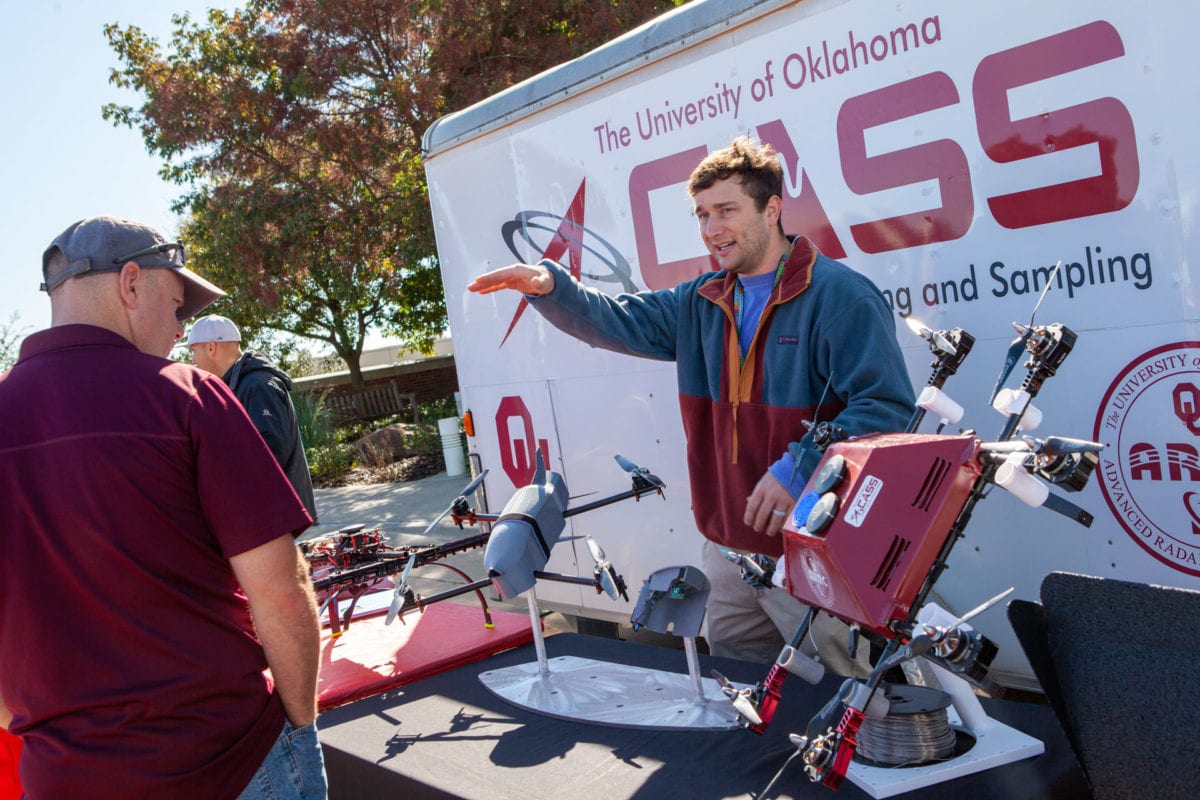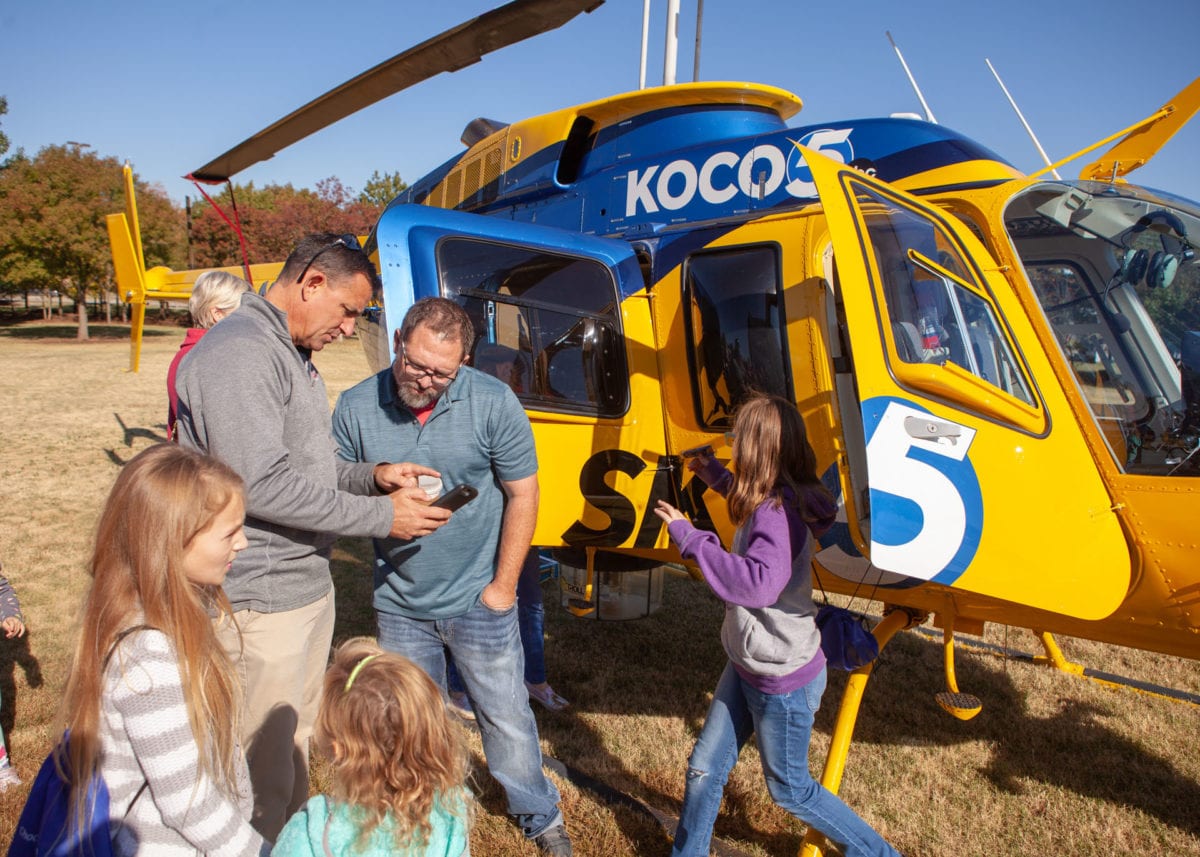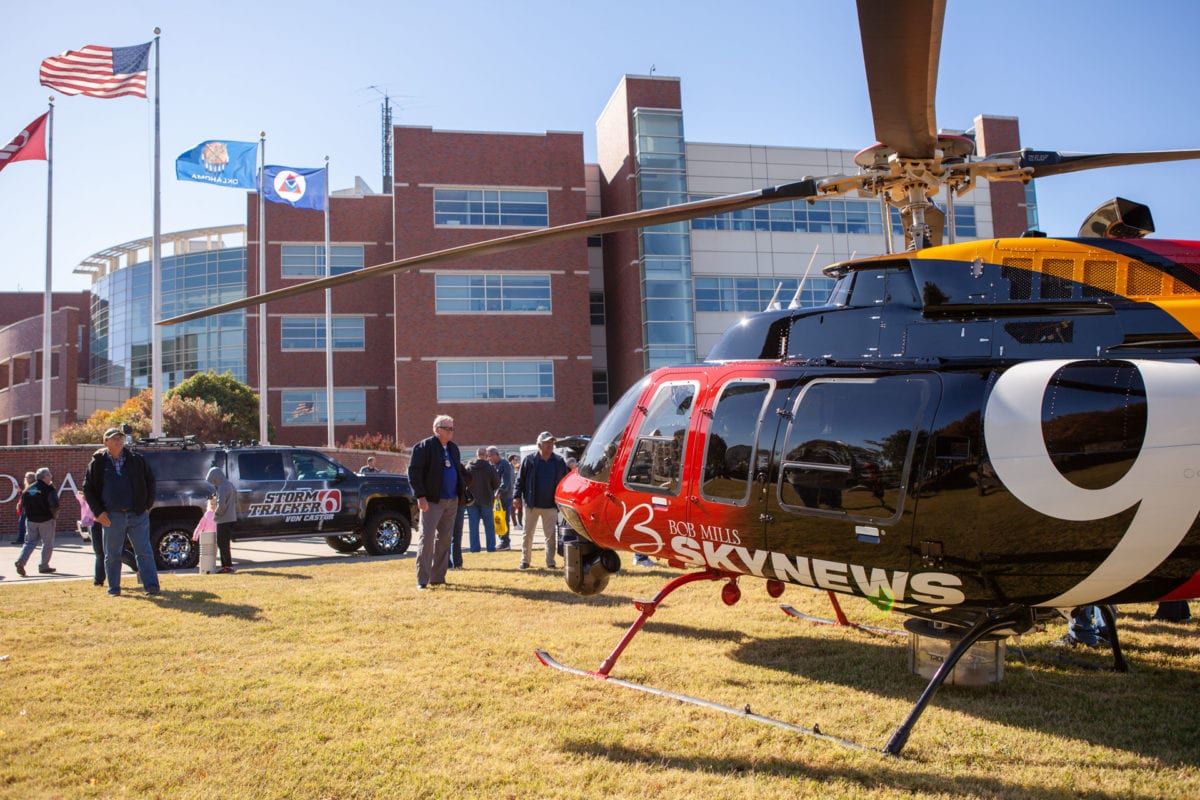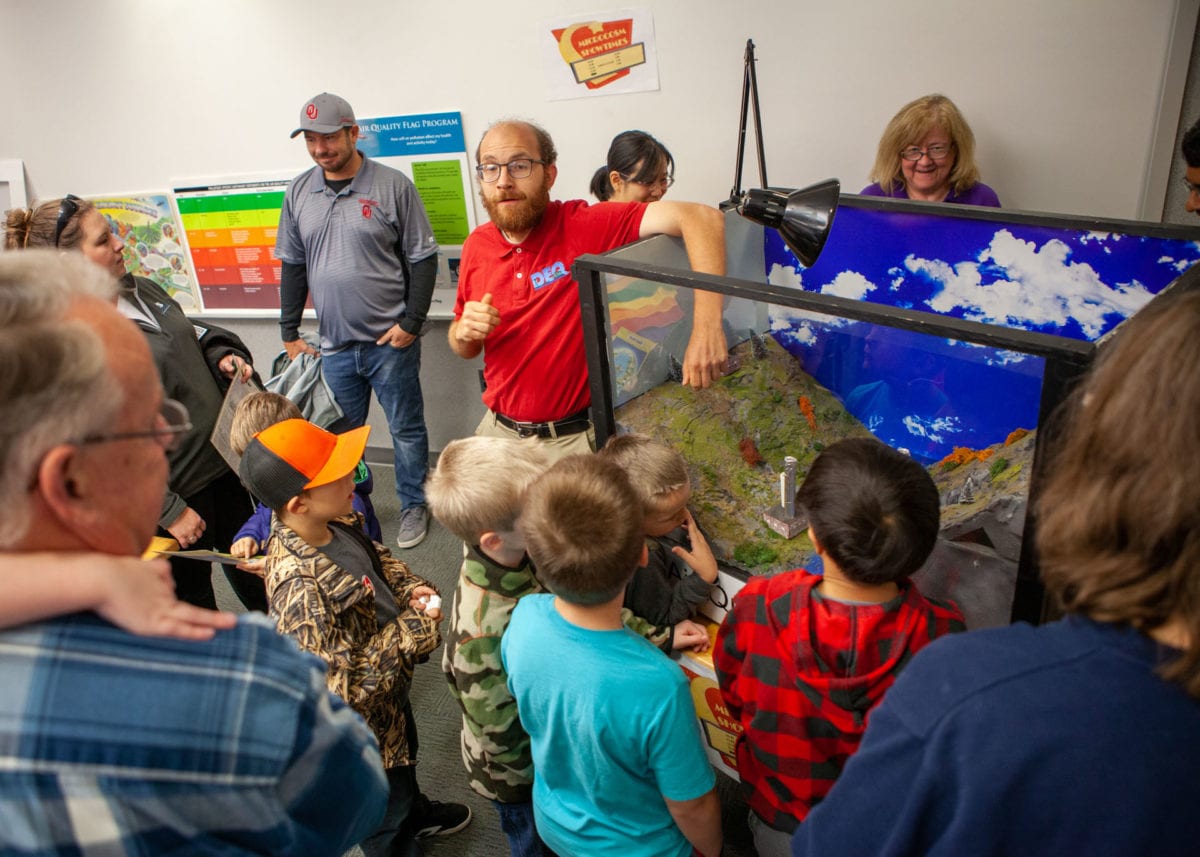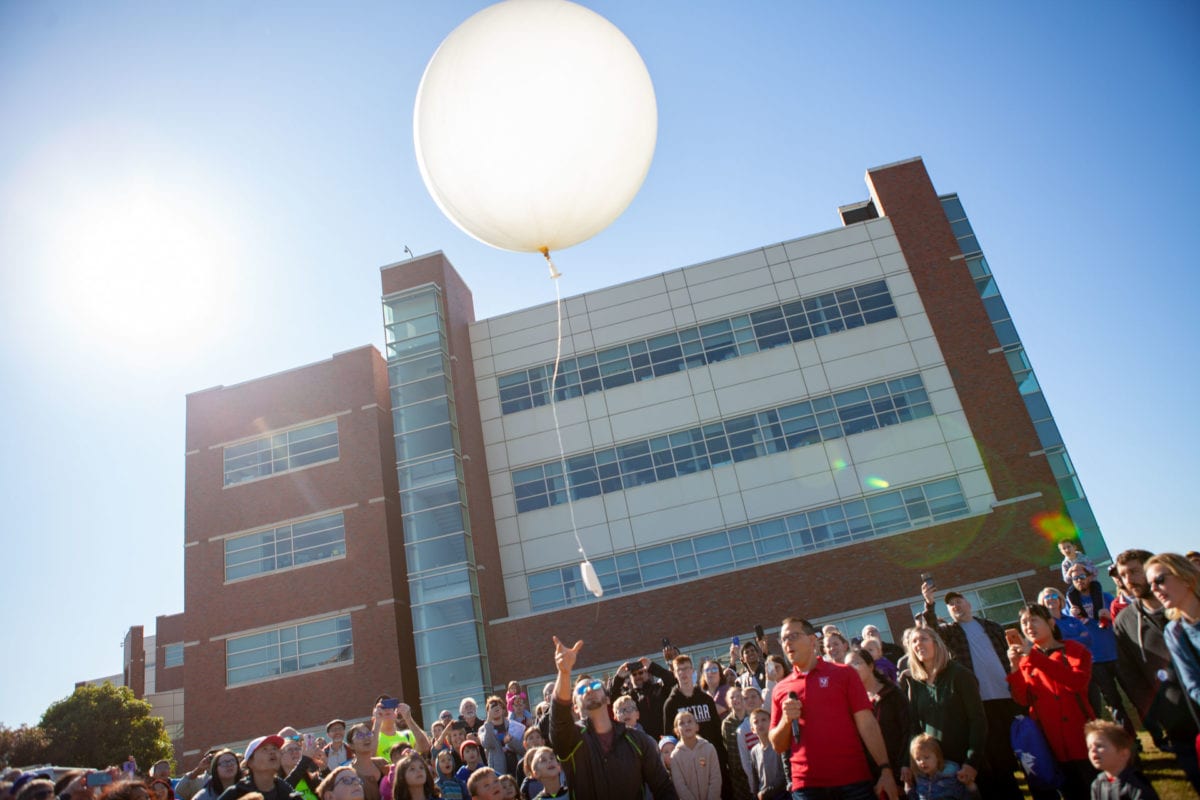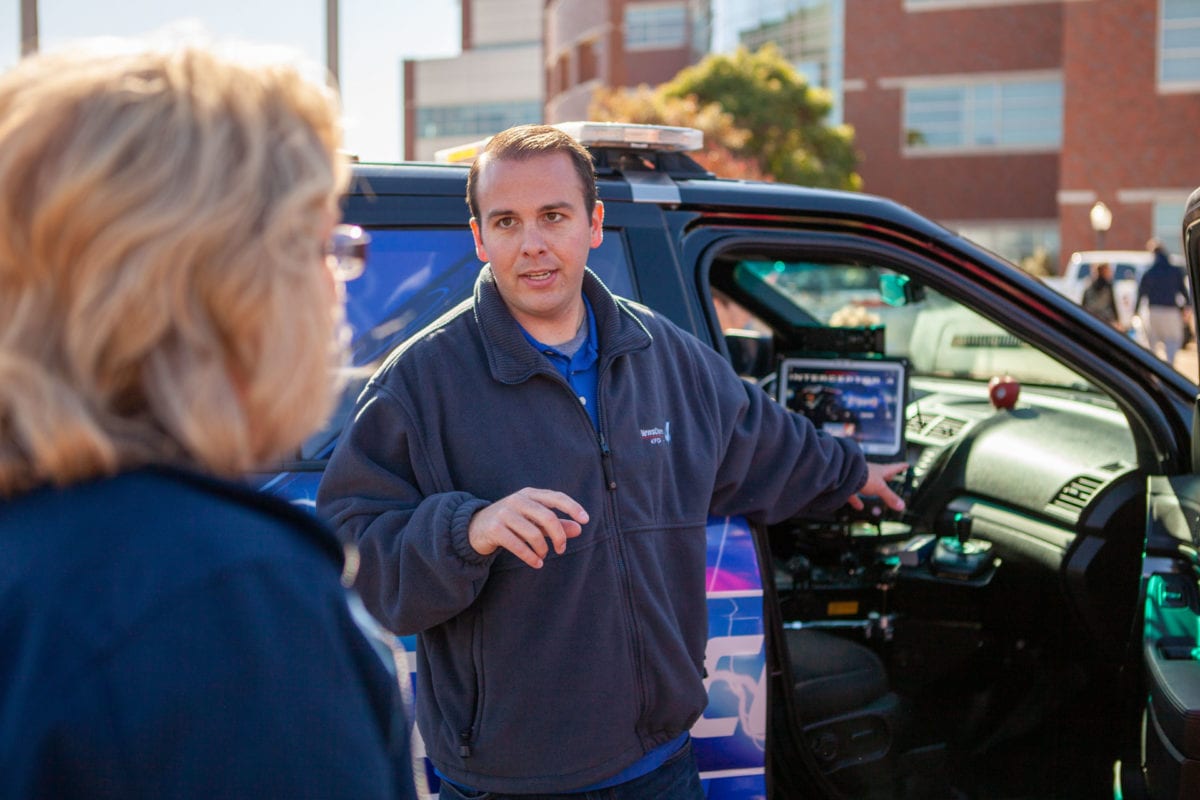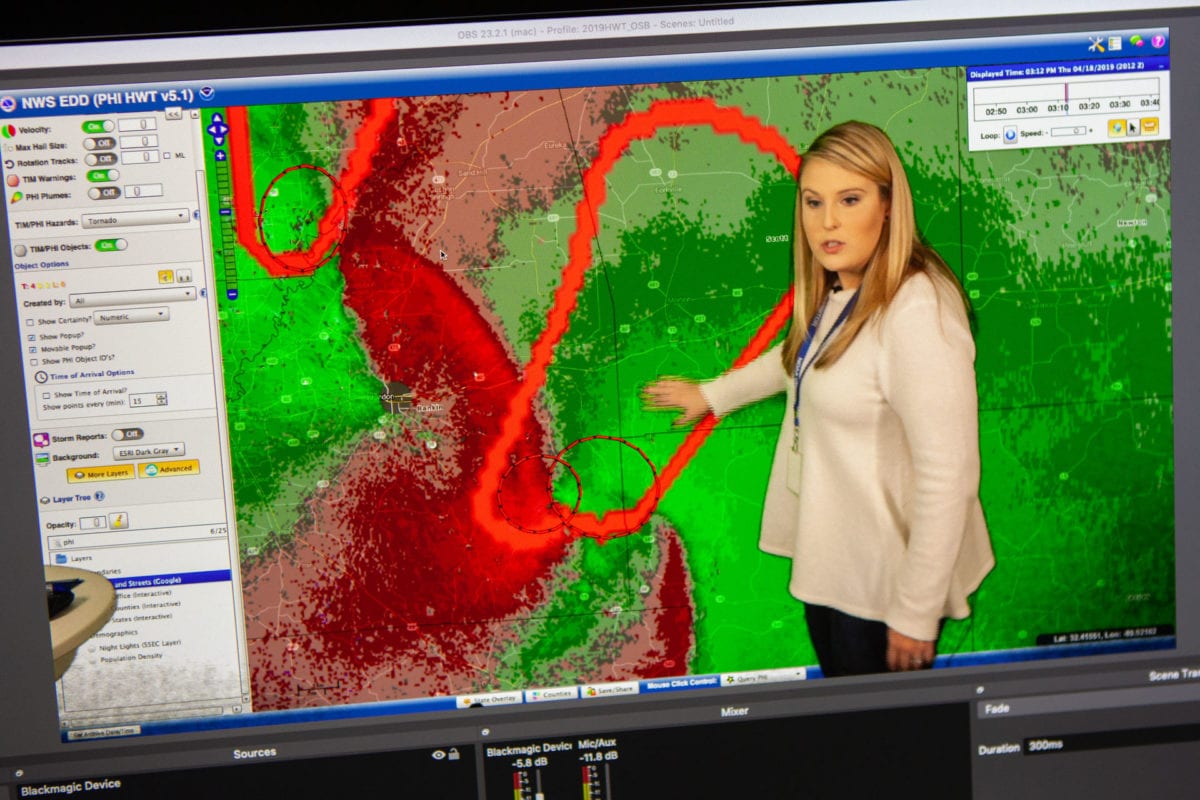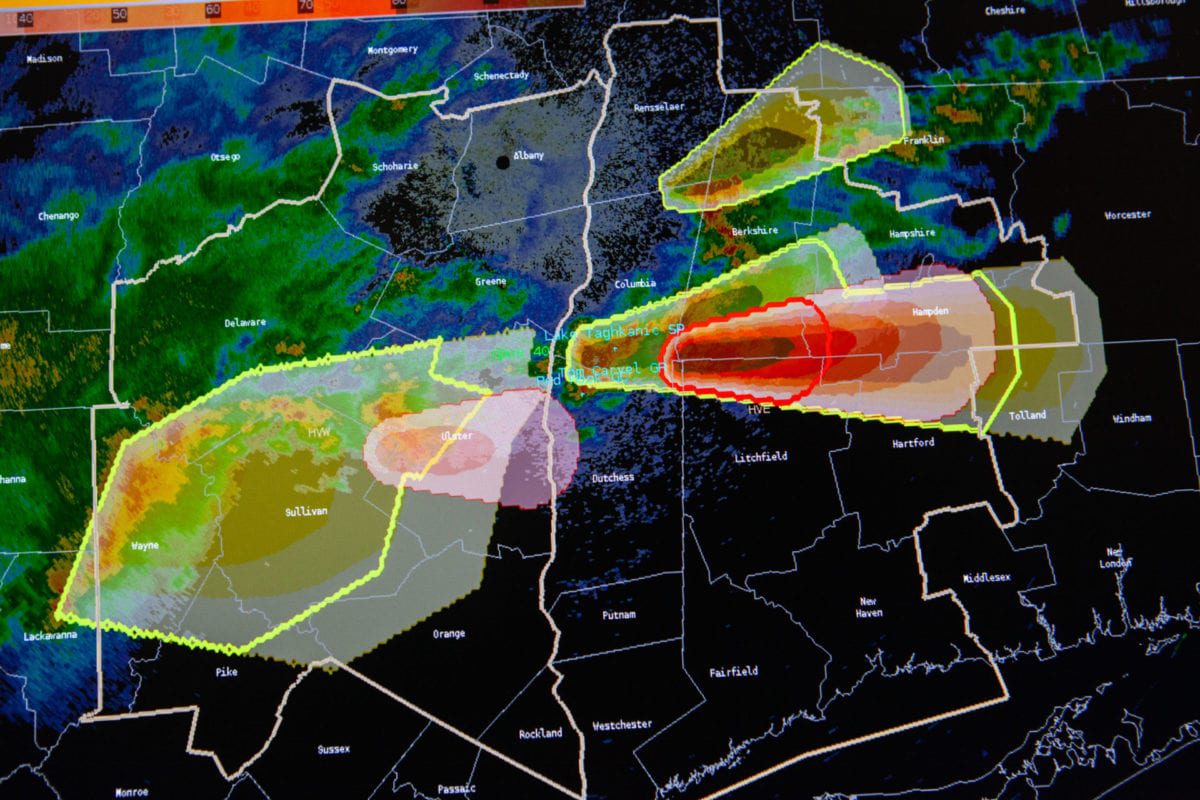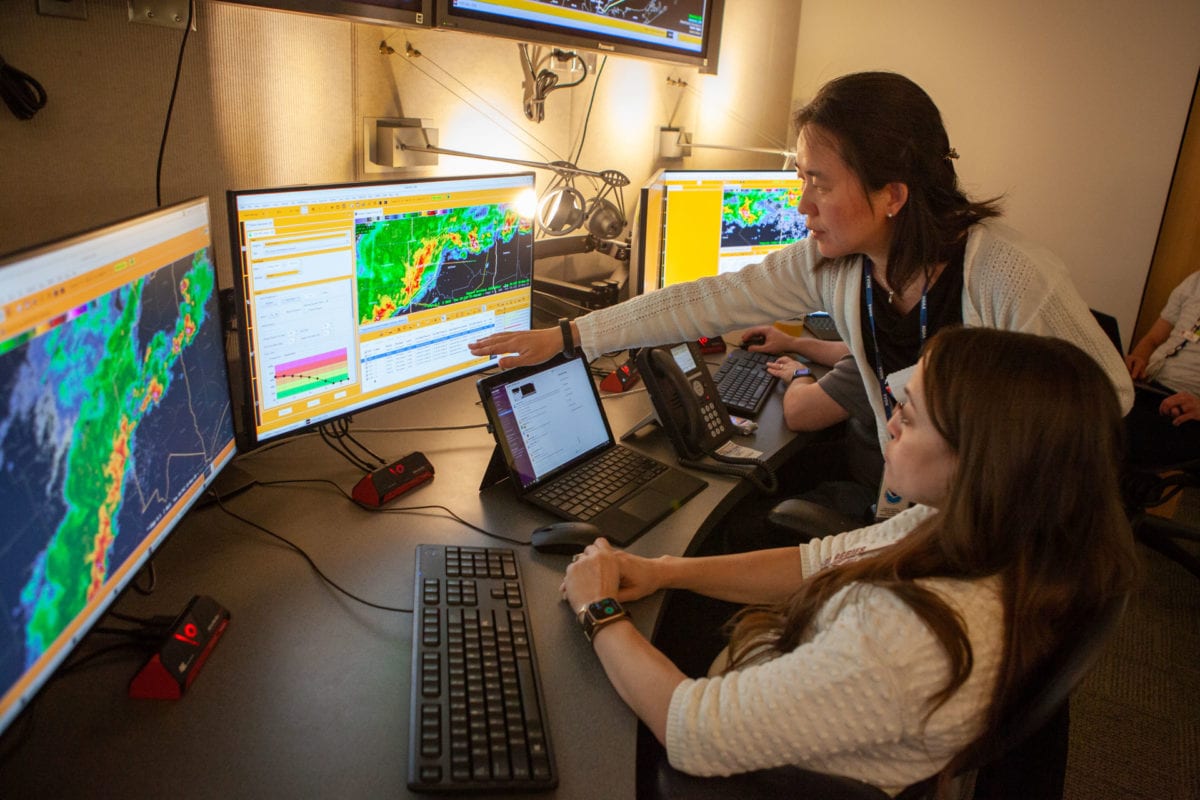Meteorology is a pretty broad topic. You can point your barometer toward studies in severe weather, atmosphere, hurricanes, climate change, wind patterns, radar research and development or even different instrumentation. Even better, Oklahoma is one of the best places in the nation to study most of those topics.
Kaitlin Frost travels the U.S., speaking to K-12 students about meteorology as the Outreach Coordinator for the National Weather Center/College of Atmospheric and Geographic Sciences at the University of Oklahoma. Frost works in OU’s one-of-a-kind facility, dedicated to meteorology education, where federal, state and university entities work together. The federal partner, the National Oceanic and Atmospheric Administration (NOAA), is also in the building.
OU has the largest meteorology degree program in the nation and is an innovator in severe weather and radar research. Frost says meteorologists are first responders, and if you choose that career, finding the right school is important.
“Each school has its own specialty research area,” she says.
Rick Smith, the Warning Coordination Meteorologist for the NOAA National Weather Service Forecast Office in Norman, says jobs are ample.
“Entry level jobs in the NWS are available in the 122 local forecast offices across the country and at our national forecast centers,” he says. “You need at least a bachelor’s degree in meteorology or other natural sciences.”
Michael Biggerstaff, Ph.D., is a professor of meteorology at OU. He explains that while being bright and determined are great for future meteorologists, you really need “an innate passion for weather. Nearly all our students developed an interest in the atmosphere typically between five and ten years old.” Biggerstaff himself was only five when he decided to study weather.
The trio of experts agree that math, physics, chemistry and computer science are key to meteorology – and it’s smart to have a good foundation in those areas before college.
During undergrad, “look for student research positions,” suggests Biggerstaff. “We hire many of our undergrads to assist in the research enterprise, giving them a leg up in competition for graduate school or jobs in the private sector.”
Other options are available, however.
“You can get your bachelor’s in meteorology, and go into the Air Force or Navy, where they’ll train you more, and then you are a federal meteorologist,” says Frost. “NOAA has over seven different U.S. centers that focus on weather.”
Photos courtesy NOAA
Other career options include private weather companies that sell specific forecasts for things like shipping, concerts and sporting events. And, of course, broadcast meteorologists keep the general public informed on TV. No matter the path you choose, Oklahoma is a great place to be.
“Scientists never want to be bored,” says Biggerstaff. “Oklahoma weather makes it one of the best places to be a meteorologist. Norman has the third highest concentration of weather-related jobs in the U.S. Most meteorologists would love to be here in the spring storm season.”
But, Smith adds, “weather is everywhere, and there are job opportunities across the country. Oklahoma weather can be frustrating and stressful. But those challenges make being a meteorologist here an interesting, rewarding experience.”
A meteorologist’s day depends on the type of job. For many, hours can be long.
“At the NWS locations, they have cots and food available,” says Frost. “Sometimes the weather is so bad you can’t leave the building.”
Smith adds that a typical day can be 10 hours.
“Your daily schedule depends on your job duties. Broadcasters have well-defined deadlines and have to put together their materials on a tight schedule,” he says. “And they perform public outreach, staying engaged with the local community.”
At the NWS, Biggerstaff says, “there are forecasters working eight hour shifts around the clock, every day. On a quiet weather day, we produce routine forecasts for general weather, aviation and fire weather, as well as climate information. We interact with our television meteorologist partners, and our partners in emergency management and public safety. We’re active on social media.”
KWTV News 9 meteorologist Lacey Swope, based in Oklahoma City, enjoys how diverse the state’s weather is.
“The way the dynamics come together in Oklahoma make it a dream come true for a lover of atmospheric science,” she says. “At a television station, we throw everything at covering the weather. Storm trackers, dual-pol radar, helicopters and more. Being part of a team like this is amazing. I also love getting paid to talk about something I love.”
But Swope admits the dynamic nature of Oklahoma’s weather keeps her and numerous other meteorologists on their toes.
“It requires monitoring 24 hours a day. New data is always flooding in and has to be analyzed,” she says. “This takes away from family time and personal life sometimes. The weather doesn’t care if it is a holiday, a birthday, or if you don’t feel well. It has to be covered, and it is our job to keep people informed.”























